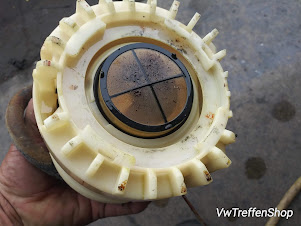in 2008, I described my experience replacing the in-tank fuel pump. At the time I bought a replacement Pierberg and did the installation myself. It worked just fine and I was able to drive the car for a short time until other issues arose and the car was once again relegated to the garage.
Fast forward 10 years and this brand new pier berg with very few miles has been wallowing inside a gas tank with the crappiest California grade gasoline. I did add Stabil gas preservation to minimize the caramelization that occurs with the Ethynol and other CARB additives that are used here in the Left Coast state.
In 2020, when we finally did what was required to make this car road worthy once again, we discovered that the new Pierberg I'd installed had succumbed to the CA gas. One mistake I'd made was not cleaning out the gas tank before installation of the new fuel pump. So there was 25 years of accumulated dirt and debris at the bottom of the tank. In addition, the CA Gas has carmelized and had coated everything also forming small deposits of solids which were eventually sucked into the new pump destroying it.
So the tank was fully drained and the dirt cleaned out from the bottom.

 Visible is the solid condensation from the dirt and debris. The corrosion on the new pump was visible. I'm assuming the same corrosion that affected the float arm also affected the internals inside the pump.
Visible is the solid condensation from the dirt and debris. The corrosion on the new pump was visible. I'm assuming the same corrosion that affected the float arm also affected the internals inside the pump. 


Comments